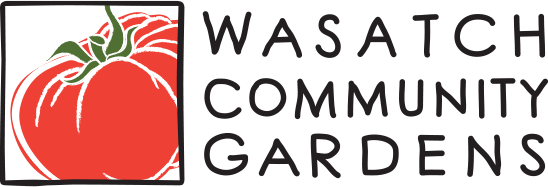
Mary Jo Neal Tedesco is an extraordinary person, and we are lucky to have her as a Perennial Plant Expert at our Plant Sale.
While she didn't have too much to share in her interview, she shares an extraordinary story and her thoughts about gardening in an article she wrote about Horticultural Therapy posted below.
How long have I been gardening?
I have been gardening for about 20 years
My favorite things to grow are…
Some of my favorite things to grow are edamame and tomatillos
What the WCG Plant Sale means to me?
I really enjoy checking out all of the insect life in an organic garden and get most excited seeing elders, and now children too, reaping the many benefits of working in and eating from a healthy and happy organically grown garden! Mary Jo



(Photo of Mary Jo's elders)
What Is Horticultural Therapy?
Mary Jo Neal Tedesco, HTR
On my first day as a new volunteer for the Garden Program at The Redwoods Retirement Community in Mill Valley, California, I was sent to the skilled nursing facility to bring a resident out to the vegetable garden. “Ask Ruby Lou if she wants to come out and join us” directed the Garden Coordinator. I found my way to the Day Room, asked where I could find her, and was directed to a tiny woman sitting quietly in a sun lit corner. “Would you like to come out and help us plant some new seeds?” I asked. Ruby Lou could no longer verbally communicate, but her eyes lost their vacant look and lit up. I knew her answer. I pushed her in her wheelchair out to the garden and my new adventure in Horticultural Therapy began.
She chose seeds for Black Beauty Zucchini. I picked up a pot of soil and placed a few seeds in her small hands. She tipped them into the soil and gently moved her arthritic fingers in the soil to cover them up. Together we lifted the water pitcher and poured water onto the seeds. She looked up at me with her beautiful bright eyes that were full of the excitement of starting the life of a new plant. The plant was marked with her name and placed with others in a cold frame. For the next few weeks we went out to the garden to check the progress of her plant as it grew large enough to place in one of the raised vegetable growing beds. Her plant thrived and gave the residents lots of wonderful squash. Sadly, Ruby Lou did not live to see her plant reach maturity, but she felt so much pleasure in the garden during her last days that I never went to the garden again without feeling her presence.
Horticultural Therapy is a rapidly growing profession with roots going back to the earliest planted gardens. Simply defined it is a therapeutic discipline using plants, plant materials, and gardening activities to improve physical, mental, emotional, social, and spiritual outcomes. All of us who garden have experienced the feelings of peace, wonder, self-esteem, and stress relief from pressures of everyday life when we interact with our world of plants. The Horticultural Therapist expands on these benefits by assessing the specific needs of an individual, setting goals for healing, and then designing a program to reach these goals using indoor and outdoor gardening activities. For example, in the case of a person who is affected by a stroke, transplanting seedlings exercises fine motor control, counting the correct number of seeds and pots stimulates mental activity, lifting a watering can strengthens weak muscles, sharing the beauty of a simple flower arrangement creates socializing opportunities, and caring for a tender plant takes one outside of oneself and one’s problems. Women with whom I have worked at a homeless drug rehab shelter, here in Salt Lake City, learn new skills (mental), cultivate the soil (physical), work in groups to transplant (physical and social), sit quietly in the Healing Garden (spiritual and emotional), and discover the metaphor of successfully growing living plants as they learn to grow new, successful lives.
These many benefits and more serve populations in an abundant diversity of settings such as hospitals, nursing homes, prisons, drug rehabilitation centers, schools, psychiatric centers, private homes, and community gardens. To learn more about Horticultural Therapy you can access information at the web site of the American Horticultural Therapy Association at www.ahta.org .

“Our miracles are where we plant them.” Jeannette
